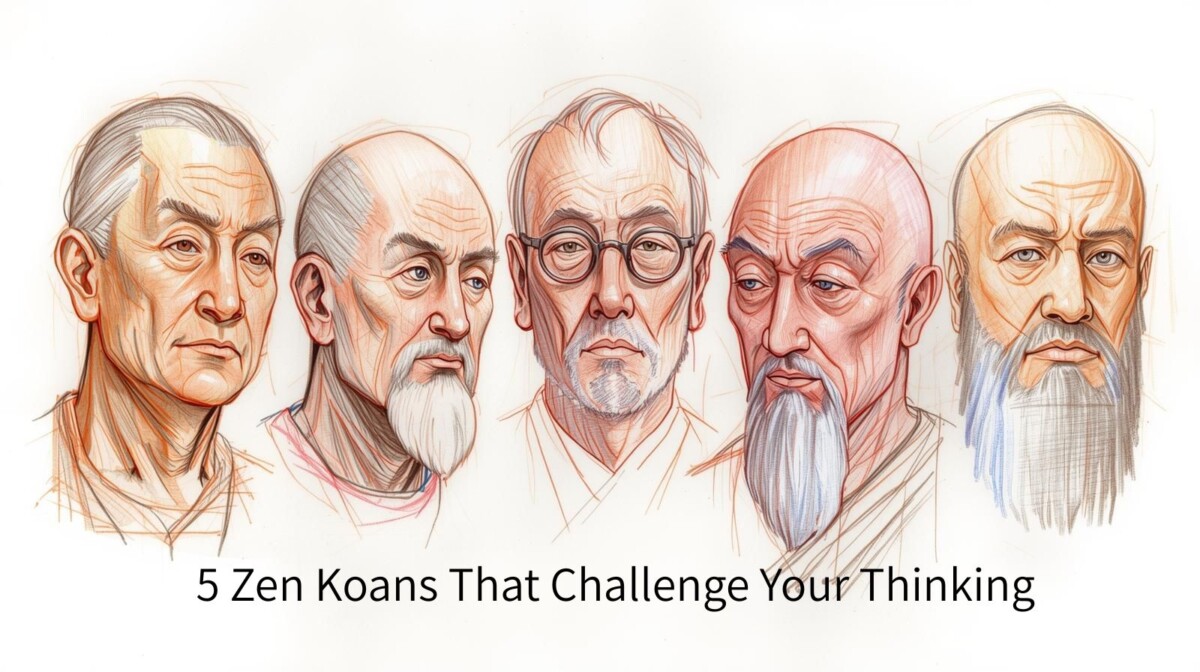
5 Zen Koans That Challenge Your Thinking
Introduction
Have you ever heard something so simple yet so mind-bending that it stops your thoughts in their tracks? Welcome to the world of Zen koans — paradoxical questions or statements that challenge your intellect, ego, and assumptions.
In a time where attention spans are shrinking and answers are always a Google search away, koans force you to face what can’t be solved — only experienced.
Think of them as the original brain teasers for the soul.
What Is a Koan, Really?
A koan (公案) isn’t just a riddle or a philosophical game. It’s a Zen practice designed to short-circuit logic and awaken insight.
Monks in training meditate on koans not to “solve” them, but to embody their essence. They’re like linguistic lightning bolts — jarring, humorous, profound.
1. “What is the sound of one hand clapping?”
This classic koan appears silly — until you try to sit with it. It challenges:
-
Your assumptions about perception
-
Your reliance on duality (sound/no sound)
Why it matters today: In a hyper-connected world, this koan invites you to consider the value of silence, solitude, and non-response.
2. “If you meet the Buddha on the road, kill him.”
Shocking? Yes. But this koan isn’t literal — it’s about not clinging to external forms of truth.
-
Don’t idolize teachers
-
Don’t rely on second-hand wisdom
-
Look within
Modern application: In the age of influencer spirituality, this koan is a wake-up call to authenticity.
3. “Does a dog have Buddha nature?”
A monk asked this to Master Joshu. He replied, “Mu” (無), meaning “not” — or possibly, “nothing.”
This koan probes:
-
The nature of enlightenment
-
The limits of language
-
The human desire for binary answers
Why it’s relevant: As tech evolves, we’re grappling with whether AI has awareness. This koan pushes us to question what it really means to “have nature” or “self.”
4. “Show me your original face before your parents were born.”
Say what?! This koan challenges identity, time, and memory.
-
What are you beyond your body?
-
Who are you before you were “you”?
Use in Zazen: Meditate on this koan not to “understand” it, but to let go of constructed identity.
5. “How do you step from the top of a 100-foot pole?”
This koan is about transformation. It asks:
-
What do you do after “waking up”?
-
How do you live enlightenment in daily life?
In today’s language: It’s not about peak experience — it’s about integration.
Why Koans Are Trending Again
Zen koans are being rediscovered by:
-
Startup founders looking for mental clarity
-
Mindfulness practitioners seeking deeper inquiry
-
Neuroscientists exploring the paradoxes of consciousness
-
TikTok creators turning koans into “micro-mindfulness moments”
Final Thought
You don’t “solve” a koan. You become it.
Sitting with a koan teaches you to rest in the unknown — to be fully present with uncertainty.
In an era driven by algorithmic precision and hot takes, Zen koans offer a different kind of clarity: the kind born from not-knowing.
💬 Try sitting with one of these koans today. Write it down. Read it slowly. And don’t try to figure it out.
Let it figure you out.
🪷 Want more koans delivered to your inbox each week? Sign up for our Zen Letter at zen-for-life.com
🌿 Want to go deeper into Zen and mindful living?
Explore ZEN for LIFE — a gentle guide to bringing presence, simplicity, and calm into your everyday routine.
Now available on Kindle.
#ZENforLIFE #MindfulLiving #EverydayZen










この記事へのコメントはありません。